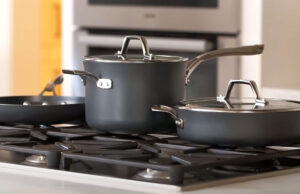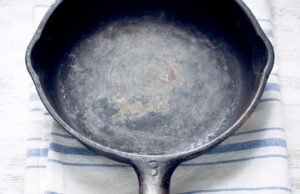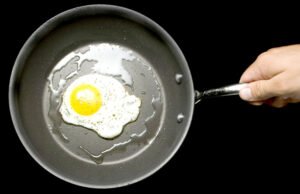As an Amazon Associate, I earn from qualifying purchases at no extra cost to you.
How to Secure Dishwasher to Quartz Countertop Like a Pro
The dishwasher keeps sliding every time you open it, and your quartz countertop already has a tiny scratch from the last attempt. Frustrating, right? In this article, you’ll discover the exact ways to secure your dishwasher safely without risking chips, cracks, or wobbles.
First, measure and align your dishwasher carefully so it sits evenly. Use manufacturer brackets and screws designed for quartz, avoiding any drilling that can crack the surface. Silicone or rubber padding can protect the countertop edges. Tighten brackets gradually, checking the dishwasher’s position often.
Prepare Your Workspace and Tools
Before touching the dishwasher, clear the surrounding area to prevent accidents. Remove any nearby items like mats, dishes, or cleaning supplies. Have all tools ready: a screwdriver, mounting brackets, silicone pads, and a level. You don’t want to scramble halfway through, feeling stressed. Wearing gloves can also help you grip screws and brackets more easily.
Check the dishwasher’s manual for any specific instructions related to quartz countertops. Some models have adjustable brackets, and others require optional hardware. Understanding the requirements beforehand saves you from mistakes and ensures the countertop remains intact. Always keep a towel or soft cloth nearby to catch any drips or scratches.
Next, measure the height and position of the dishwasher relative to the countertop. Quartz is heavy and unforgiving, so a small misalignment can create major problems. Use a level to ensure the dishwasher will sit flush with the cabinets. Mark the bracket positions lightly with a pencil on the countertop edge for accuracy.
Finally, double-check that your water and power connections are reachable without forcing hoses or cords. Moving the dishwasher too much during installation can stress the countertop. Take your time here; preparation is half the work, and it ensures a smoother, safer installation.
- Clear surrounding area
- Gather all necessary tools
- Check manufacturer instructions
- Measure height and position
- Ensure easy access to water and power
Choose the Right Mounting Brackets
Not all brackets work with quartz. Quartz countertops are sturdy but brittle along the edges, so using the wrong bracket can cause cracks. Look for brackets labeled “quartz-safe” or adjustable metal brackets designed to clamp rather than drill. Avoid DIY hacks like nails or thin metal clips—they risk damaging your countertop.
Before installation, examine the brackets for defects, sharp edges, or loose screws. Smooth out any rough parts with sandpaper if needed. This prevents scratches when sliding brackets under the countertop edge. Test the fit by holding the bracket in place without tightening. It should sit snugly without forcing it.
Brackets often come with padding or rubber inserts. Make sure to keep them in place; they act as a buffer between the dishwasher and the quartz. If your kit doesn’t include padding, use a thin silicone strip. This simple trick prevents stress on the quartz while still holding the appliance firmly.
Finally, consider the weight distribution. Some dishwashers are heavier at the front, so position brackets where they can support evenly. Uneven support can cause wobbling over time and even stress the countertop edge. A little planning now saves a lot of headaches later.
- Select quartz-safe brackets
- Inspect brackets before use
- Use padding or silicone
- Test fit before tightening
- Ensure even weight distribution
Position the Dishwasher Correctly
Slide the dishwasher into the opening slowly. Keep the floor free of obstacles to avoid sudden jolts. Use help if the dishwasher is heavy; one person should not handle it alone. A slight bump can chip quartz or misalign the appliance.
Check that the front of the dishwasher aligns with cabinet doors. Misalignment looks messy and may prevent proper bracket installation. Keep a level handy, and check both sides as you slide it into place. Small adjustments now prevent problems later.
Leave a small gap, about a quarter inch, between the countertop and dishwasher. This allows the brackets to slide in without forcing them. Pushing too hard can chip the quartz edge. If the dishwasher is too low or too high, adjust the legs first before attempting to secure it.
Ensure hoses and power cords are not pinched or stretched. Moving the dishwasher carefully protects these connections. Once positioned, lightly hold it in place while checking alignment again. This careful approach prevents damage and makes the next steps much easier.
- Slide dishwasher slowly
- Check alignment with cabinets
- Maintain small countertop gap
- Adjust legs if needed
- Avoid pinching hoses or cords
Secure the Dishwasher Using Brackets
Once positioned, attach the brackets to the countertop. If using clamps, tighten screws gradually. Do not force the bracket; tight enough to hold is sufficient. Over-tightening can crack quartz, and that’s a repair nobody wants.
Use a level again to ensure the dishwasher remains perfectly horizontal. Small adjustments can be made by shifting the brackets slightly before final tightening. This ensures the appliance won’t wobble over time.
Check all edges of the dishwasher to confirm even contact with the countertop. If any edge lifts, readjust the brackets. You want the dishwasher flush without putting pressure on quartz. Patience here prevents long-term issues.
Finally, test by gently opening and closing the door. If it slides or rocks, loosen and adjust the brackets slightly. Once stable, give a final check for level, alignment, and bracket security.
- Attach brackets carefully
- Tighten gradually, avoid overpressure
- Use level to check horizontality
- Adjust edges for flush fit
- Test dishwasher movement
Protect the Countertop with Silicone or Padding
Adding a layer of protection prevents scratches and distributes pressure. Use silicone pads or strips under brackets. These act like shock absorbers, reducing stress on quartz edges.
Apply a thin bead of silicone along the edge of the countertop if needed. Wipe away any excess immediately to keep it neat. Silicone also prevents water from seeping under brackets, which could damage cabinets over time.
Ensure the padding doesn’t interfere with bracket tightening. The dishwasher should still hold firmly, but the countertop should feel cushioned. Check the thickness to avoid lifting the appliance unevenly.
Finally, recheck alignment and level after adding padding. Small changes can occur, so a quick verification ensures everything stays perfect. Proper padding protects your investment in both the countertop and appliance.
- Use silicone or rubber pads
- Apply thin bead along edges
- Ensure padding doesn’t hinder brackets
- Verify dishwasher alignment
- Protect countertop edges
Final Testing and Adjustments
Open and close the dishwasher door multiple times to check stability. Listen for rattling or signs of shifting. Minor adjustments can be made by slightly loosening brackets and repositioning.
Check the alignment with surrounding cabinets. If the dishwasher tilts forward or backward, adjust the leveling legs carefully. Quartz is rigid, so small errors can become noticeable quickly.
Verify hoses and cords remain secure. Moving the dishwasher even slightly can loosen connections, so ensure everything stays in place. Water leaks can be disastrous if ignored.
Once everything feels solid, give one final inspection. The dishwasher should feel stable, the countertop untouched, and all brackets snug. Take a step back and admire the clean, professional installation.
- Open and close door to check stability
- Adjust leveling legs if needed
- Ensure hoses and cords secure
- Verify countertop remains undamaged
- Confirm final bracket tightness
Final Thoughts
Securing a dishwasher to a quartz countertop doesn’t have to be stressful. With patience, the right tools, and protective measures, you can prevent cracks, scratches, and wobbles. Careful alignment, proper brackets, and silicone padding make the process safe and durable. After following these steps, your dishwasher will sit perfectly flush, stable, and ready for years of worry-free use. A little attention now saves big repairs later.
| Task | Tip | Reason |
|---|---|---|
| Clear Workspace | Remove obstacles | Prevent accidents |
| Measure & Align | Use level | Ensure flush fit |
| Choose Brackets | Quartz-safe | Avoid cracks |
| Protect Edges | Silicone pads | Cushion & prevent damage |
| Secure Slowly | Tighten gradually | Avoid overpressure |
| Test Stability | Open/close door | Ensure no wobble |
Frequently Asked Questions (FAQs)
Is it safe to drill into quartz for dishwasher brackets?
Drilling into quartz is risky because it can crack or chip the surface. Quartz is extremely hard but brittle, and even small mistakes can cause costly damage. Instead of drilling, use brackets designed to clamp or slide under the countertop edge. If drilling is absolutely necessary, hire a professional with diamond-tipped bits and proper support. Always protect the surrounding area and work slowly. Most installations can be done without drilling, making the process safer and preserving your countertop’s integrity.
Can I use regular metal brackets for a quartz countertop?
Regular metal brackets are usually not recommended. They can put uneven pressure on the quartz, causing chips or cracks along the edges. Quartz-safe brackets are designed to distribute weight evenly and often come with padding. If you must use regular brackets, add a silicone or rubber layer to cushion contact points. Always tighten gradually and monitor alignment. Using the wrong bracket can damage your countertop permanently, so investing in proper hardware is worth it for long-term protection.
Do I need to hire a professional to secure a dishwasher to quartz?
Hiring a professional is optional but can be helpful if you’re unsure about alignment or bracket choice. A professional ensures brackets are installed safely, leveling is perfect, and the quartz stays intact. For confident DIYers, following manufacturer guidelines and using proper brackets usually works well. Take your time, double-check measurements, and protect edges with silicone. Even careful DIY installation can match professional results if done patiently and correctly.
Is silicone necessary when securing the dishwasher?
Yes, silicone or rubber padding is highly recommended. It cushions the countertop edges, prevents scratches, and distributes pressure from brackets. Silicone also prevents water from seeping into tight spots, protecting cabinets. Even if your dishwasher sits tightly, padding ensures long-term stability. Without it, the quartz edge could chip over time, especially if the dishwasher is heavy or frequently moved. It’s a small step that protects your investment and makes installation safer.
Can I adjust the dishwasher after securing it?
Yes, but adjustments should be minor. Loosen the brackets slightly and reposition the appliance. Avoid forcing it or pushing hard, as quartz edges are fragile. Small tweaks to leveling legs can correct tilt or wobble without stressing the countertop. Always check alignment after any adjustment. If you need major repositioning, remove the brackets and reinstall carefully to prevent damage. Regular testing ensures the dishwasher stays stable and secure.
Do I need special tools for quartz installation?
Special tools aren’t always necessary, but a few basics help: a level, screwdriver, silicone applicator, and a soft cloth. Avoid power tools directly on the quartz unless drilling is required, which is risky. Precision tools make alignment and bracket installation easier, preventing errors that could damage the countertop. Gloves can also improve grip and protect your hands. Proper tools make the process safer, faster, and more accurate.
Is it okay if the dishwasher is slightly uneven?
A slightly uneven dishwasher is not ideal. It can cause doors to swing open awkwardly or water not draining properly. Even a small tilt puts pressure on the countertop and brackets. Adjust the leveling legs or brackets to correct it. Take measurements on both sides and check with a level multiple times. Correcting small misalignments now prevents long-term problems and protects your quartz surface.
Can water leaks damage the quartz countertop?
Water leaks rarely damage quartz directly, but they can ruin cabinets and create mold in gaps. Quartz is water-resistant, but pooled water can seep into seams or edges. Properly securing the dishwasher with silicone padding also prevents water from reaching underneath. Inspect hoses and connections during installation. Regular checks after installation ensure no leaks develop. Protecting both the countertop and surrounding cabinetry keeps your kitchen safe and clean.




